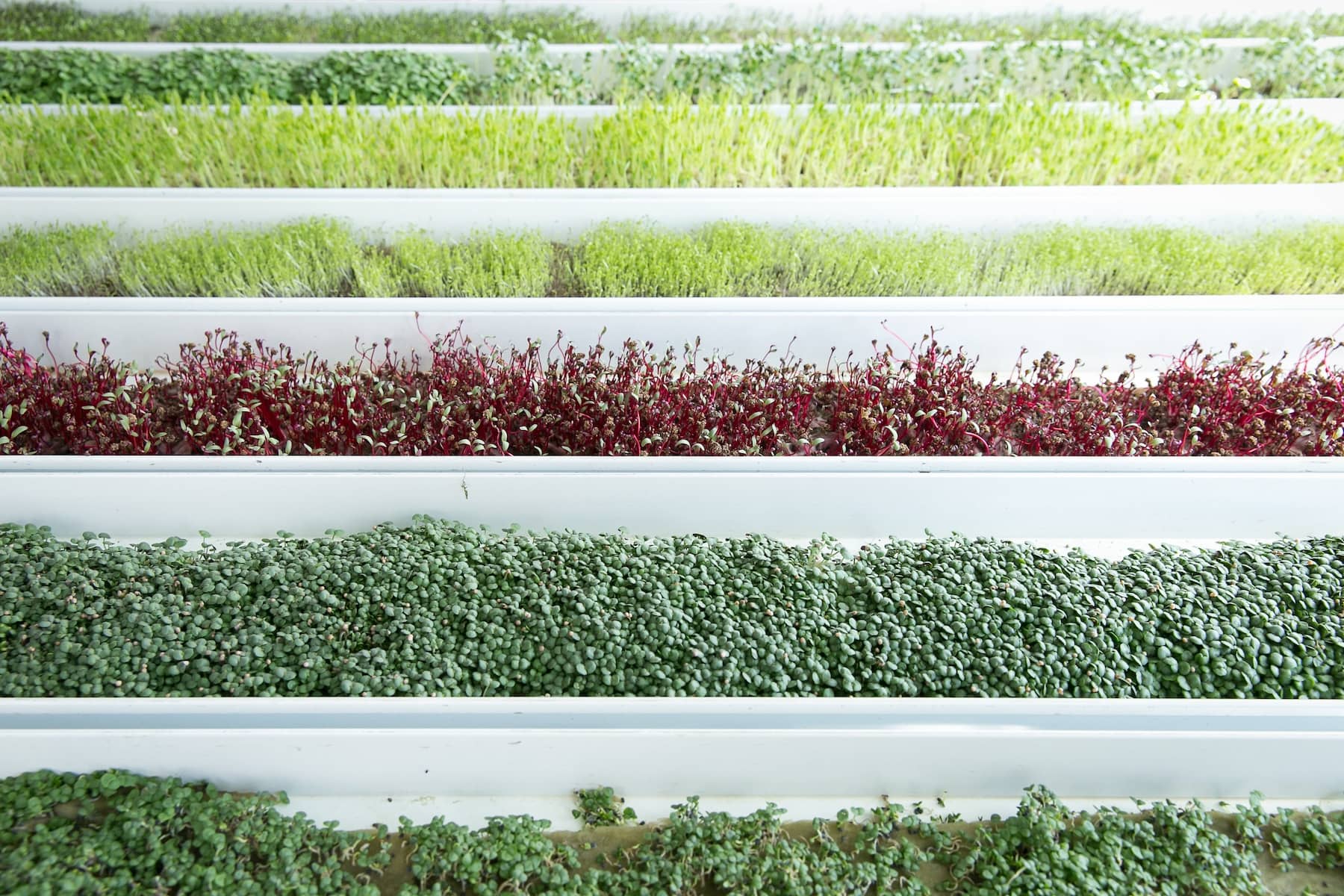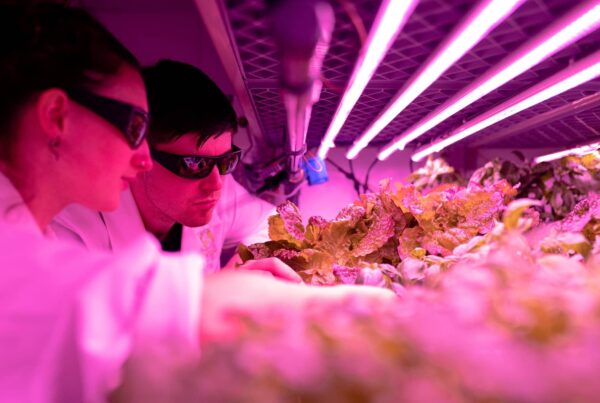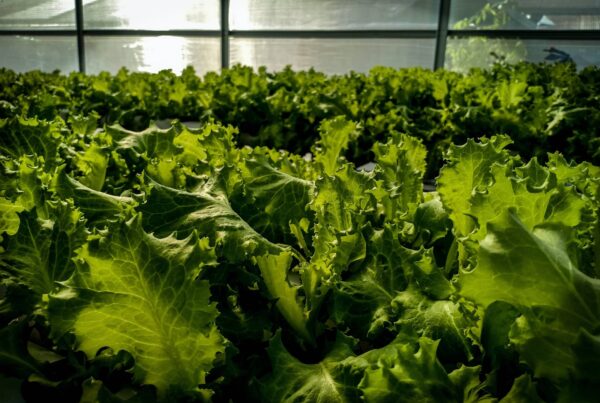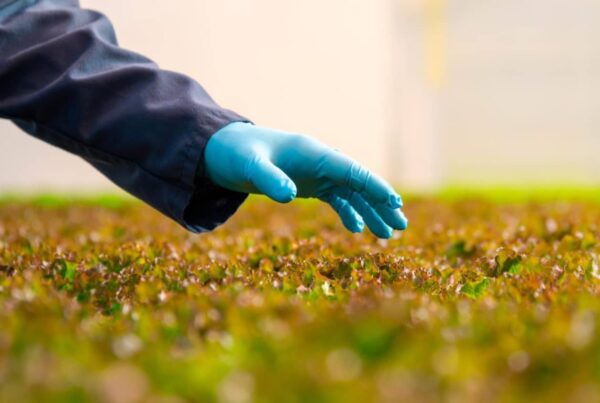The vertical farming company received nearly $49 million in USDA loan guarantees. Here, the company shares some of the work that went into the process.
The process Vertical Harvest Farms, a hydroponic, vertical farming company with facilities in Wyoming and Maine, went through to get a USDA loan guarantee was a months-long affair full of black swan events and documentation audits, Vertical Harvest CFO Will Morrow tells Resource Innovation Institute.
“When we were doing our application, before we got our bank approval, Silicon Valley Bank blew up, and things seemed to just stop,” he remembers, referring to the March 2023 collapse, one of the largest banking failures in U.S. history. “We had no idea when the bank that was ultimately reviewing our package from the bundler was going to approve it because bank approvals, nationally, slowed significantly.”
Ultimately, Vertical Harvest patiently and successfully navigated those murky waters. On April 24, the company shared in a press release the closing of $59.5 million in project financing to develop and operate a 51,000-square-foot vertical farm in downtown Westbrook, Maine. Nearly $49 million came from USDA loan guarantee programs alone, with the remainder originating from state programs.
In the announcement, the company noted the Westbrook project “aligns with Vertical Harvest’s ‘feed locals first’ philosophy and goal of providing greens from farm-to-fridge within 24 hours.”
The USDA loan guarantee programs Vertical Harvest tapped into are available to any CEA operation–as long as they meet the eligibility criteria. When applying to these, “you need to be ready with a lot of information,” Morrow says. “It’s not an easy process, it takes a lot of work and you need a team to do it.” The company is proud of the resilience demonstrated by the internal team and ecosystem of partners that moved the project financing over the finish line, recognizing the level of effort and persistence required.
- Population Priority: project is located in an area or city with a population under 25,000.
- Location
- Distressed community
- Rural County
- Current unemployment rate is 125% of the statewide rate or greater
- Boundaries of a federally recognized tribe
- Guaranteed Loan Features
- Interest rate is equal to or less than WSJP + 1.5%
- Guaranteed loan is less than 60% of the total project costs
- Veteran owned
- High-Impact Business Development Investment
- Industry not present in the local community
- If the business has 20% or more of its sales in international markets
- Business locally owned and managed
- Produce a value-added product
- Business processes, distributes, aggregates, stores, and/or markets locally or regionally produced agricultural food products to underserved communities
- Business creates or saves a minimum of 5 jobs with an average minimum wage exceeding 150% of the federal minimum wage.
- Business offers a healthcare benefits package to all employees and pays at least 50% of healthcare premium
- Administrative points
- There is a total of up to 30 points to be earned in this category and can be given by the state director or administrator. With that said, these points are rarely awarded and would be on a case-by-case basis.
The Loan Guarantee Landscape
When Vertical Harvest first embarked on its fundraising journey, there were three main USDA loan guarantee programs that most CEA projects could qualify for: the Rural Energy for America Program (REAP), the Business and Industry Program, and the now-defunct Food Supply Chain Program.
The Business and Industry Program is the most flexible of the three, Morrow notes, and competition for the Business and Industry program can be fairly high as applicants are not limited to CEA or food-producing businesses. “Anyone can apply to Business and Industry for anything as long as they meet the rural requirements,” Morrow explains.
REAP, for its part, is “geared towards energy efficient operations,” Morrow continues. “If you’re looking to buy better lighting, if you’re looking to go buy something that uses less water, if you’re looking to innovate something that will use less energy in the overall manufacturing of your product and you can demonstrate it through a third party analysis,” REAP can help finance that project.
These programs are capped at $25 million each per company. Applying for and qualifying for both can unlock up to $50 million in USDA loan guarantees. They also have different annual and initiation fees.
“What’s interesting about being an urban farmer is that there are exemptions in the different USDA guarantee programs for urban farmers to be able to fund into these urban areas like we did in Westbrook, which wouldn’t qualify under normal USDA rules,” Morrow shares.
- Environmental Benefits: points awarded depend on the level of impact
- Energy generated, replaced, saved, or percent of efficiency: up to 25 points can be awarded in this section.
- Commitment of Funds: Percentage of acceptable written commitment a borrower has from its other funding sources that are documented with a complete application.
- Previous grantee or borrower under the REAP program
- Existing business: existing agricultural producers’ business or rural small business
- Simple payback: RES, EEI or EEE. Point will only be awarded for one category.
- Administrative Points
- No more than 10 points
- Under-represented technology
- Helps achieve geographic diversity
- Unserved or under-served population
- Project helps further Secretary of Agriculture and Presidential Initiatives
- Located in a federally declared disaster area
- Poverty rate is 20% or higher.
- Unused funding: if the project scores too low, the Agency may utilize unused funds from the previous fiscal year.
Source: Waterside Commercial Finance
The Food Supply Chain Program was the least competitive for being such a well-funded one, Morrow says. Meant for “new investments in infrastructure for food aggregation, processing, manufacturing, storage, transportation, wholesaling, and distribution,” per the USDA, Morrow explains this means “you had to have enough of your expenses tied to harvesting and non-growing activities to access that program.” Improvements to regular cultivation activities would not qualify and would instead fall under REAP or the Business and Industry Program.
In another example of a Black Swan event complicating the application process, Vertical Harvest had to contend with the fallout of the Congressional debt ceiling negotiations in July 2023. The Food Supply Chain program was cut as a result of those negotiations, forcing Vertical Harvest to work toward other financing methods. “Now the word on the street is FSC is going to come back,” Morrow posits. If and when it does, it remains to be seen whether it will retain its $40 million cap.
Barring any banking collapses and government shutdowns, applying to a USDA loan guarantee program typically will take 9 months from the moment you start compiling paperwork and filling out forms. “You’re probably looking at two, two and a half months of bank underwriting,” Morrow shares. “And then you’re looking at probably three to four months, maybe as long as five months of USDA review.”
Additional scrutiny can be given to applications looking to max out a program. That should not deter applicants, Morrow says. “You should pursue what you need and what is eligible for what you’re trying to do.”
How to Do the Work
USDA loan guarantee program applicants will have different forms to complete depending on which specific program(s) they are applying for. That said, Morrow notes that every application will require a fairly detailed outline of the business model and how the project will achieve the program’s goals. Banks underwriting the loans also will need extensive reporting on payment schedules and business viability to accept the loan risk–even with the USDA guarantee, banks remain conservative lenders, especially with agri-food businesses.
Morrow advises that companies work with a bundler who has experience with local banks and with USDA programs. These bundlers “are going to do the underwriting for the bank and then they’re going to submit it to the bank,” he explains, noting how both the familiarity with the bank’s or credit union’s needs and with USDA program requirements can help avoid delays. “The bank is going to review the bundler application, say, ‘yes, this is the underwriting we need, we agree with it,’ and then submit the package to the USDA.” Little to no communication will happen between the applicant and the USDA during the process.
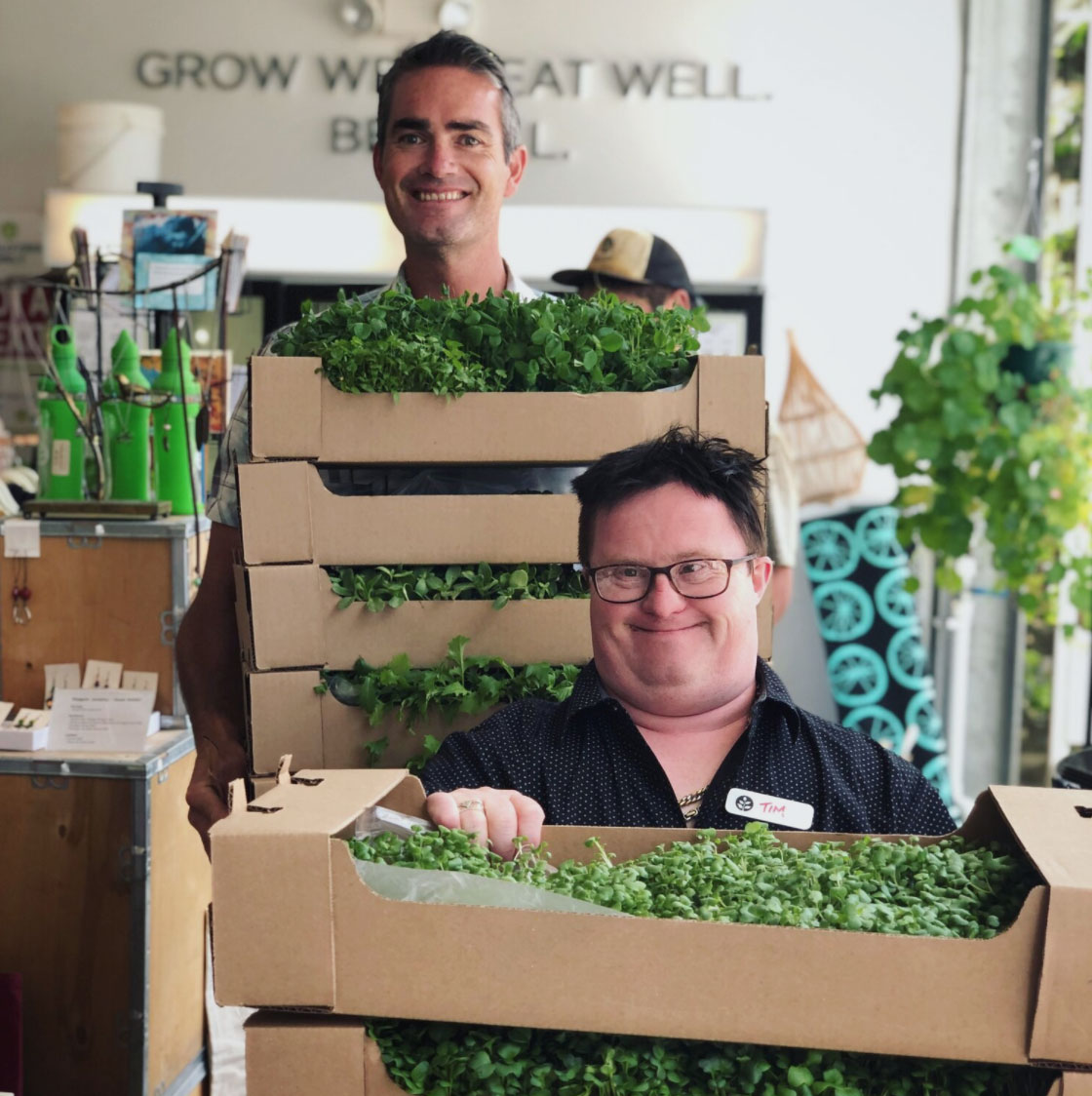
While bundlers can help identify and assemble the materials needed, Morrow advises companies to pay close attention to offtake agreements, supplier deals (raw materials, equipment), cash sources and use outlines, and cash flow modeling. “Those will give the lender confidence you’re going to be able to pay them back on time and give them [the ability to] audit your basic cash flows,” he says. As the repayment plans for these projects often span 25 years, banks need assurance of the project’s viability.
Offtake agreements in particular are important to have in place, as those will show lenders your project’s ability to generate revenue. Knowing who your buyers will be, how much of your product they each can take, and the frequency at which they will be paying you will tell the lenders there is demand for your products and lend credence to your business projections.
“Some businesses are looking to go through Walmart and Whole Foods, some are looking to go through small grocers, some are looking to do restaurants, some are looking to do small grocery,” Morrow details. “Wherever you can get your margin, where you think you have a competitive advantage, and what distribution territory you’re looking to service are all parts of that strategic plan that you have to have well-dialed.
Finally, demonstrating local job support through specific company programs can boost your application standing. Morrow highlights the career opportunities Vertical Harvest has for local community members with disabilities–specifically creating access to technology and upskilling in a fast growing industry for people with historic barriers to meaningful employment. “At Vertical Harvest, we have a very strong focus on giving people with disabilities career-level jobs. They become citizen farmers in a way that they would likely not have had access to before,” he says. “That’s a big part of our story.”
To learn more about Vertical Harvest, read RII’s case study here.


